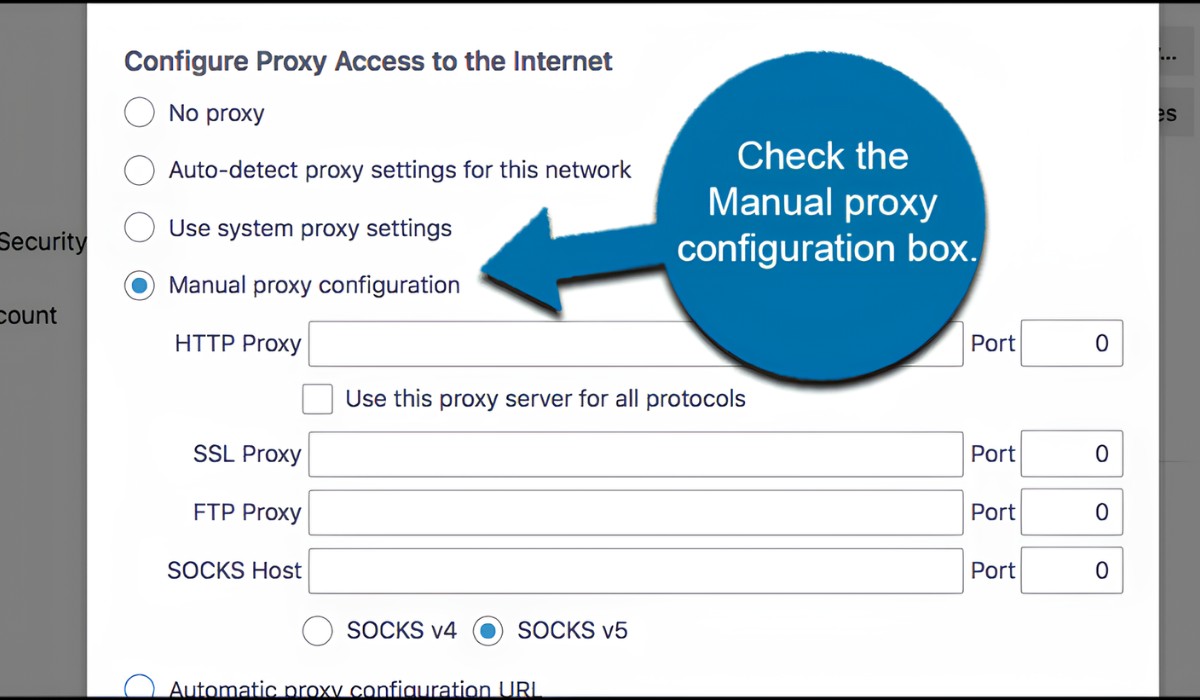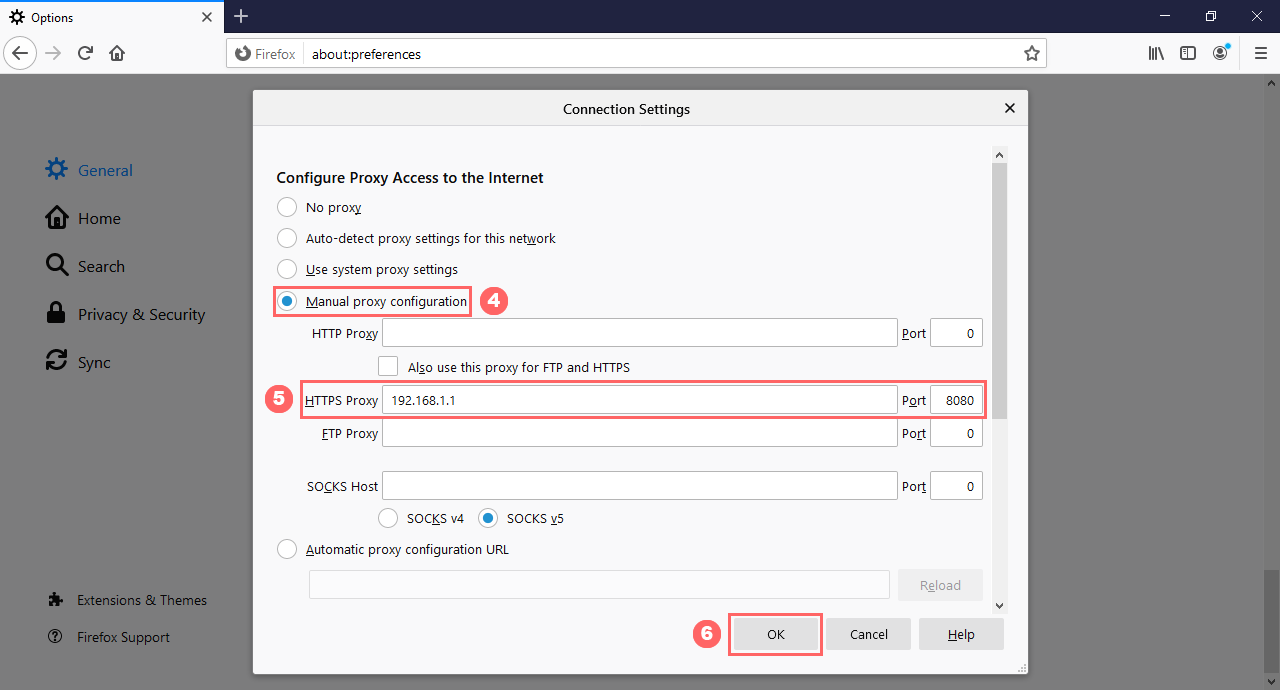Introduction
A proxy server is a vital component of the internet infrastructure that plays a crucial role in facilitating communication between clients and servers. It acts as an intermediary between a user’s device and the destination server, serving as a gateway to handle user requests and relay information. Proxy servers offer several benefits, including enhanced security, improved performance, and access control.
When a user sends a request to access a website or any online resource, the request passes through a proxy server before reaching the destination server. The proxy server masks the user’s IP address and sends the request on their behalf. This process provides anonymity and privacy, making it a popular choice among internet users who want to protect their identity and browsing activities.
Furthermore, proxy servers help in increasing network efficiency by caching content. By storing frequently accessed web pages, images, and files, a proxy server can deliver them to users without sending a request to the original server, resulting in faster load times and reduced bandwidth usage. Additionally, proxy servers can balance server loads, ensuring a smooth and efficient distribution of network traffic.
There are various types of proxy servers, each designed to fulfill specific functions. Forward proxies, also known as web proxies, are commonly used by individuals to bypass network restrictions and access blocked websites. On the other hand, reverse proxies are deployed by website owners to improve scalability, load balancing, and security.
In this article, we will delve into the function of a proxy server, exploring its role in enhancing security and privacy, facilitating access control and content filtering, enabling content caching and acceleration, aiding in load balancing, and bypassing geographical restrictions. By understanding the vital role proxy servers play, we can appreciate their significance in the modern internet landscape.
Definition of a Proxy Server
A proxy server is an intermediary server that acts as a bridge between a user’s device and the destination server. It functions by relaying client requests to other servers on behalf of the user. In simple terms, when a user wants to access a website or any online resource, their request goes through a proxy server before reaching the intended server.
The primary purpose of a proxy server is to provide various functionalities that aid in the exchange of data between users and servers. By acting as an intermediary, the proxy server can modify, filter, and cache data to improve security, efficiency, and performance.
When a user sends a request to access a website, the request is first received by the proxy server. The proxy server then evaluates the request and forwards it to the destination server on behalf of the user. This process helps in masking the user’s IP address and providing a layer of anonymity. It also allows the proxy server to effectively control and manage the traffic flowing through it.
Proxy servers are equipped with a variety of protocols and filters that enable them to perform their functions efficiently. These protocols allow the proxy server to handle different types of requests, such as HTTP, HTTPS, FTP, and more. Additionally, proxy servers can implement access control mechanisms to restrict or allow specific users or content based on predefined rules and policies.
Furthermore, proxy servers can also be used for caching purposes. When a user requests content that has been previously accessed and stored in the proxy server’s cache, the server can deliver the cached content instead of fetching it from the destination server. This caching mechanism helps in reducing bandwidth usage and improving response times for subsequent requests.
In essence, a proxy server acts as a middleman between users and servers, playing a crucial role in facilitating communication and enhancing the overall experience. By providing anonymity, managing traffic, implementing access control, and caching content, proxy servers have become an integral part of the modern internet infrastructure.
How a Proxy Server Works
A proxy server operates by intercepting and forwarding client requests to other servers. It acts as an intermediary between the user’s device and the destination server, playing a crucial role in managing network traffic and enhancing security and performance.
When a user sends a request to access a website or any online resource, it first reaches the proxy server. The proxy server evaluates the request and determines the appropriate action to take based on predefined rules and policies. This evaluation can include checking filters, access control lists, and caching mechanisms.
If the requested content is available in the proxy server’s cache and is still valid, the proxy server delivers it directly to the user without the need to fetch it from the destination server. This process, known as caching, helps in reducing bandwidth usage and improving response times for subsequent requests.
If the requested content is not available in the proxy server’s cache or is expired, the proxy server acts as a client on behalf of the user and sends the request to the destination server. It then receives the response from the destination server and forwards it back to the user’s device.
The proxy server also plays a crucial role in enhancing security and privacy. By sitting between the user and the destination server, the proxy server can mask the user’s IP address and provide an additional layer of anonymity. This feature is often utilized to bypass network restrictions or access blocked websites.
In addition to providing anonymity, proxy servers can also implement access control mechanisms. This enables them to restrict or allow specific users, content, or websites based on predefined rules. Access control helps in enforcing security policies and preventing unauthorized access to sensitive information.
Moreover, proxy servers can facilitate content filtering, allowing administrators to block access to certain websites or filter out specific types of content. This functionality is commonly used in organizations and educational institutions to ensure compliance with acceptable use policies and to protect users from accessing potentially harmful or inappropriate content.
In summary, a proxy server acts as a middleman between users and servers, intercepting and forwarding requests to provide various functionalities. It manages network traffic, enhances security and privacy, enables content filtering, and improves performance through caching. By understanding how a proxy server works, users can make the most out of its benefits in terms of security, privacy, and improved browsing experience.
Benefits of Using a Proxy Server
Using a proxy server offers several benefits for both individuals and organizations. Whether it’s for improved security, enhanced privacy, accessing blocked content, or optimizing network performance, proxy servers provide valuable advantages in the online world.
1. Enhanced Security: A proxy server acts as a protective barrier between the user’s device and the destination server. It can help prevent direct connections, making it more challenging for malicious attackers to target users’ devices. By providing an additional layer of security, proxy servers help safeguard sensitive information such as login credentials and personal data.
2. Improved Privacy: Proxy servers help preserve user privacy by masking their IP address. When a user connects to the internet through a proxy server, the server’s IP address is visible to the destination server, keeping the user’s actual IP address hidden. This anonymity makes it more challenging for websites and online services to track users’ browsing activities.
3. Accessing Blocked Content: Proxy servers are commonly used to bypass censorship and access blocked websites or content. By routing internet traffic through a proxy server located in a different region or country, users can circumvent geographic restrictions imposed by content providers or governments.
4. Bandwidth Optimization: Proxy servers can cache frequently accessed web pages, images, and files. By storing this content locally, the proxy server can deliver it to users without having to retrieve it from the original server. This caching mechanism reduces bandwidth usage and improves the overall performance of the network.
5. Network Performance Improvement: Proxy servers can help optimize network performance by distributing traffic and balancing loads across multiple servers. With load balancing, proxy servers ensure that no single server is overwhelmed by excessive traffic, resulting in faster response times and better overall performance.
6. Content Filtering and Access Control: Proxy servers enable administrators to implement content filtering policies. This feature allows organizations to restrict access to specific websites or content categories, ensuring compliance with acceptable use policies and protecting users from accessing potentially harmful or inappropriate content.
7. Anonymity in Online Activities: Proxy servers provide users with the ability to browse the internet anonymously. By masking their IP address and encrypting their internet connection, proxy servers help users maintain their anonymity and protect their online activities from being tracked or monitored.
Overall, using a proxy server can bring numerous benefits, including enhanced security, improved privacy, access to blocked content, optimized bandwidth usage, network performance improvement, content filtering, and the ability to browse the internet anonymously. These advantages make proxy servers a valuable tool for individuals and organizations alike.
Types of Proxy Servers
Proxy servers come in various types, each serving specific purposes and catering to different needs. Understanding the different types of proxy servers allows users to choose the most suitable option based on their requirements. Here are some of the commonly used types of proxy servers:
1. Forward Proxy: Also known as web proxies, forward proxies are the most commonly used type of proxy servers. These proxies are typically used by individuals to bypass network restrictions and access blocked websites. When a user requests a website, the request is sent to the forward proxy, which then forwards the request to the destination server on behalf of the user.
2. Reverse Proxy: Unlike forward proxies, reverse proxies are deployed by website owners to improve scalability, load balancing, and security. Reverse proxies act as intermediaries between the destination server and users. Instead of relaying client requests, they handle requests from clients and forward them to the appropriate server. Reverse proxies are commonly used in high-traffic websites to distribute incoming requests across multiple servers and improve performance.
3. Transparent Proxy: Transparent proxies are proxies that do not modify user requests or responses in any way. They work behind the scenes, intercepting and forwarding traffic, without any noticeable impact on the user experience. Transparent proxies are often used by internet service providers (ISPs) to enhance network performance and enforce content filtering policies.
4. Anonymous Proxy: Anonymous proxies provide a higher level of anonymity by removing or hiding the original IP address of the user. When a user connects to a website through an anonymous proxy, the website only receives the IP address of the proxy server, making it difficult to track the user’s location or identity.
5. High Anonymity Proxy: High anonymity proxies, also known as elite proxies, provide the highest level of anonymity. These proxies conceal not only the user’s IP address but also their identity and any identifying information. High anonymity proxies are preferred by users who require maximum privacy and security.
6. SSL Proxy: SSL proxies, also known as HTTPS proxies, are designed to handle encrypted traffic using the Secure Sockets Layer (SSL) or Transport Layer Security (TLS) protocols. These proxies are commonly used to secure online transactions, protect sensitive information, and ensure data integrity during data transfers.
7. SOCKS Proxy: SOCKS proxies operate at the transport layer (Layer 5) of the OSI model and provide a platform-independent, flexible solution for routing network traffic. They can handle various types of traffic, including TCP, UDP, and ICMP, making them suitable for a wide range of applications and protocols.
Each type of proxy server offers specific functionalities and features. Depending on the intended use, users can select the appropriate type of proxy server to enhance their online experience, improve security, and meet their specific requirements.
Function of a Proxy Server
A proxy server serves a variety of functions that contribute to the efficient and secure operation of computer networks. It acts as an intermediary between clients and servers, facilitating the exchange of information and providing several essential functionalities. Here are the key functions of a proxy server:
1. Enhanced Security and Privacy: A proxy server acts as a safeguard by adding an extra layer of security between the user’s device and the destination server. It can block potentially harmful requests, filter out malicious content, and protect against malware and unauthorized access attempts. Additionally, proxy servers can provide anonymity by masking the user’s IP address, ensuring privacy and preventing tracking.
2. Access Control and Filtering: Proxy servers allow administrators to implement access control measures to restrict or allow specific users, content, or websites based on predefined rules. This functionality ensures that users have controlled and monitored access to resources, preventing unauthorized access to sensitive or inappropriate content. Filtered content can include websites with explicit or harmful material or certain categories such as social media or streaming platforms.
3. Content Caching and Acceleration: Proxy servers can store frequently accessed web pages, images, and files in their cache. By doing so, they can deliver the content directly to users without sending requests to the destination server. This caching mechanism reduces bandwidth usage, improves response times, and decreases the load on the network and the destination server, leading to enhanced browsing speeds and overall network performance.
4. Load Balancing: Proxy servers can distribute network traffic across multiple servers to ensure optimum server load balancing. By intelligently managing incoming requests, proxy servers distribute the workload evenly, preventing any single server from becoming overloaded. This load balancing functionality results in improved performance, higher availability, and enhanced reliability of the network infrastructure.
5. Bypassing Geographical Restrictions: Proxy servers can enable users to bypass geographical restrictions imposed by content providers or governments. By connecting to a proxy server located in a different country or region, users can mask their actual location and access online content that is otherwise unavailable in their location due to regional restrictions or censorship.
6. Monitoring and Logging: Proxy servers can log user activities, including user requests, responses, and traffic patterns. These logs can provide valuable insights into network usage, enabling administrators to monitor and analyze network traffic for troubleshooting, performance optimization, and security auditing purposes.
Overall, the function of a proxy server is to act as an intermediary and provide various functionalities including enhanced security, privacy protection, access control and filtering, content caching and acceleration, load balancing, and the ability to bypass geographical restrictions. By leveraging these functions, proxy servers play a critical role in optimizing network performance, protecting sensitive data, and enhancing the overall user experience.
Enhanced Security and Privacy
One of the primary functions of a proxy server is to enhance security and privacy in the online realm. Proxy servers serve as a protective barrier between users and the internet, offering several measures to safeguard sensitive information and provide a layer of anonymity. Here’s how proxy servers enhance security and privacy:
1. Masking IP Address: Proxy servers act as intermediaries, making requests on behalf of users. When a user connects to the internet through a proxy server, the server’s IP address is visible to the destination server instead of the user’s actual IP address. By masking the IP address, proxy servers help protect users’ identities and make it more difficult for websites and online services to track their online activities.
2. Anonymity and Privacy: Proxy servers offer users a higher level of privacy by concealing their IP address and encrypting their internet connection. This makes it challenging for third parties to monitor or track users’ online activities. Users can browse the web, access online services, and communicate with websites while maintaining a certain level of anonymity and privacy.
3. Protection Against Malicious Content: Proxy servers can filter out potentially harmful requests and content, blocking access to websites or resources that are known to contain malware, malicious scripts, or phishing attempts. This protection adds an extra layer of defense against cyber threats and helps prevent users from unknowingly accessing dangerous websites.
4. Firewall and DDoS Mitigation: Proxy servers can act as firewalls to protect internal networks from unauthorized access and potential attacks. They can inspect incoming and outgoing data packets, analyzing their content and blocking any suspicious or malicious activity. Proxy servers can also provide Distributed Denial of Service (DDoS) mitigation by filtering out malicious traffic and preventing server overload.
5. Content Filtering: By implementing content filtering policies, proxy servers allow administrators to restrict access to specific websites or content categories. This feature is especially useful in educational institutions and workplaces, where it helps enforce acceptable use policies, prevent access to inappropriate or non-business-related content, and maintain a secure and productive online environment.
6. Secure Remote Access: Proxy servers enable secure remote access to internal resources within organizations. By establishing a Virtual Private Network (VPN) connection through a proxy server, remote employees can securely access internal systems, files, and applications while protecting sensitive data from unauthorized access or interception.
By providing IP address masking, anonymizing user activities, protecting against malicious content, offering firewall capabilities, enabling content filtering, and facilitating secure remote access, proxy servers significantly enhance online security and privacy. They play a crucial role in safeguarding sensitive information, protecting users from cyber threats, and ensuring a safer and more private online experience.
Access Control and Filtering
A proxy server plays a vital role in implementing access control and content filtering mechanisms, allowing administrators to control and manage user access to websites and online content. By setting up access rules and filters, proxy servers enable organizations to enforce acceptable use policies, prevent unauthorized access, and protect users from potentially harmful or inappropriate content. Here’s how access control and filtering are achieved with proxy servers:
1. Blocking Unauthorized Websites: Proxy servers can restrict access to specific websites or categories of websites based on predefined rules. Administrators can create filters that block access to websites known for hosting malware, phishing attempts, or inappropriate content. By preventing users from accessing such websites, proxy servers enhance security and protect users from potential cyber threats.
2. URL Filtering: Proxy servers can filter web traffic based on URLs or domain names. Administrators can create whitelists or blacklists of URLs to allow or block access to specific websites. This allows organizations to enforce policies regarding the use of certain websites or to restrict access to websites that are unrelated to work-related activities.
3. Content Category Filtering: Proxy servers can categorize web content and apply filters based on those categories. By classifying websites by their content type – such as social media, streaming services, or gambling sites – administrators can control user access to specific content categories. This ensures compliance with acceptable use policies and prevents users from accessing inappropriate or non-work-related content.
4. Time-Based Access Control: Proxy servers can restrict access to certain websites or types of content during specific time periods. This feature is particularly useful in educational institutions or workplaces where internet access needs to be controlled during specific hours, such as blocking social media access during working hours.
5. User Authentication: Proxy servers can require users to authenticate themselves before allowing access to the internet. This can be done through username/password authentication or through integration with existing authentication systems, such as LDAP or Active Directory. User authentication allows administrators to have granular control over access permissions and ensures that only authorized users can access the internet resources.
6. Bandwidth Management: Proxy servers can implement bandwidth management policies to allocate bandwidth resources effectively. By prioritizing critical applications or limiting bandwidth usage for non-essential activities such as video streaming, administrators can optimize network performance, ensure fairness in resource allocation, and prevent network congestion.
Through access control and content filtering, proxy servers give organizations the ability to control and monitor user access to websites, implement acceptable use policies, protect users from malicious or inappropriate content, and optimize network resources. The flexibility and granularity of access control options provided by proxy servers make them valuable tools in maintaining a secure and productive online environment.
Content Caching and Acceleration
Content caching and acceleration are important functions of a proxy server that contribute to improved performance and faster access to online content. By caching frequently accessed web pages, images, and files, proxy servers can deliver content directly to users without the need to fetch it from the original server. This caching mechanism reduces bandwidth usage, decreases server load, and enhances the overall browsing experience. Here’s how content caching and acceleration work:
1. Caching Frequently Accessed Content: Proxy servers can store copies of web pages, images, and other static content that are frequently requested by users. When a user requests a resource that is available in the proxy server’s cache, the server can deliver it directly to the user without needing to retrieve it from the original server. This caching process significantly reduces the time and resources required to retrieve the content, resulting in faster load times for subsequent requests.
2. Improving Response Times: Caching frequently requested content helps in accelerating response times for subsequent user requests. As the proxy server delivers cached content from its local storage, there is no need to establish a new connection with the destination server. This reduces network latency and improves the overall responsiveness of web pages and resources, resulting in a more efficient and enjoyable browsing experience for users.
3. Reducing Bandwidth Usage: By caching content, proxy servers can reduce the amount of bandwidth required to serve content to users. Instead of fetching the same content multiple times from the origin server, the proxy server can deliver the cached content directly to users. This reduces the strain on the network and decreases bandwidth consumption, freeing up network resources for other purposes and allowing for a smoother flow of data.
4. Optimizing Network Performance: Content caching and acceleration play a significant role in optimizing network performance. By delivering content locally from the proxy server’s cache, network congestion can be minimized, and the load on the origin server is reduced. This results in improved performance, scalability, and reliability of the network infrastructure, especially in cases of high traffic websites or applications.
5. Load Reduction on Destination Servers: By serving cached content to users, proxy servers reduce the load on destination servers. When multiple users request the same content, the proxy server can satisfy those requests from its cache, alleviating the burden on the origin server’s resources. This load reduction allows destination servers to handle more requests efficiently, improving their overall performance and responsiveness.
6. Content Refresh Policies: Proxy servers can implement content refresh policies to ensure that the cache remains up to date with the latest content changes. By periodically checking for updates or using mechanisms like conditional GET requests, the proxy server can retrieve the updated content from the origin server and refresh its cache accordingly. This ensures that users always receive the most up-to-date content, even when accessing cached resources.
Through content caching and acceleration, proxy servers significantly improve browsing speeds, reduce bandwidth usage, optimize network performance, and enhance the overall user experience. By storing frequently accessed content and delivering it locally, proxy servers provide faster access to online resources, reducing latency and alleviating the load on destination servers.
Load Balancing
Load balancing is a crucial function of a proxy server that helps distribute network traffic across multiple servers, ensuring optimal performance, scalability, and reliability of the network infrastructure. By intelligently managing incoming requests, proxy servers balance the workload among servers, preventing any single server from becoming overwhelmed and improving the overall user experience. Here’s how load balancing works:
1. Traffic Distribution: When users send requests to access websites or resources, the requests are received by the proxy server. The proxy server acts as a traffic manager, distributing the requests across multiple servers based on various load balancing algorithms. This distribution ensures an even distribution of workload, preventing any single server from being overloaded while utilizing the available resources effectively.
2. Scalability and High Availability: Load balancing allows for easy scalability and high availability of services. As the demand for resources or user traffic increases, additional servers can be added to the server pool. The load balancing mechanism ensures that user requests are distributed evenly across all available servers, allowing for efficient utilization of resources and making the system more resilient to failures or disruptions.
3. Better Performance: Load balancing leads to improved performance by preventing server overload and reducing response times. Evenly distributing incoming requests across multiple servers helps avoid bottlenecks, ensuring that individual servers are not overwhelmed with excessive traffic. As a result, user requests are processed more efficiently, leading to faster response times and a smoother browsing experience.
4. Redundancy and Failover: Load balancing provides redundancy and failover capabilities. In the event of a server failure or downtime, load balancers can quickly and automatically redirect traffic to alternative servers that are still operational. This ensures uninterrupted service availability and minimizes the impact of server failures on the overall system performance.
5. Session Persistence: Load balancers can also maintain session persistence or affinity for requests coming from the same client. This ensures that requests from a specific client are directed to the same server to maintain consistent user experience and prevent issues that may arise from server session state dependencies.
6. Dynamic Scaling: Load balancing allows for dynamic scaling of resources based on real-time demand. With load balancing, servers can be added or removed from the server pool based on current traffic patterns. This provides flexibility in resource allocation and ensures that resources are efficiently utilized, resulting in cost optimization and improved overall system performance.
Overall, load balancing is a crucial function of a proxy server that allows for efficient resource utilization, improved performance, scalability, and high availability. By distributing network traffic across multiple servers, load balancing ensures optimal performance, minimizes downtime, and provides a reliable and scalable infrastructure to handle user requests efficiently.
Bypassing Geographical Restrictions
One of the valuable functions of a proxy server is the ability to bypass geographical restrictions imposed by content providers or governments. Proxy servers allow users to access online content that may be limited or unavailable based on their geographic location. By connecting to a proxy server located in a different region or country, users can effectively bypass these restrictions and access the desired content. Here’s how proxy servers enable users to bypass geographical restrictions:
1. Masking IP Address: When a user connects to the internet through a proxy server, their actual IP address is hidden, and the IP address of the proxy server is visible to the destination server. By using a proxy server located in a different region or country, users can make it appear as if they are accessing the content from that location, bypassing the geographical restrictions placed on their original IP address.
2. Virtual Presence in Another Location: By choosing a proxy server in a specific location, users can virtually place themselves in that location and access content that is typically restricted to users from that region. This is particularly useful for accessing region-specific content such as streaming services, online TV channels, or news websites that are only available to users from certain countries.
3. Circumventing Government Censorship: In regions where internet censorship is prevalent, proxy servers play a crucial role in bypassing government-imposed restrictions. By connecting to a proxy server located outside the restricted country, users can access websites and online resources that are normally blocked or censored by the local government, enabling them to freely access information and express their opinions online.
4. Overcoming Content Licensing Limitations: Some content providers restrict access to their content based on geographic licensing agreements. Proxy servers can help users bypass these limitations by accessing the content through a proxy server located in a region where the content is available. This allows users to enjoy content that would otherwise be unavailable in their own country due to licensing restrictions.
5. Privacy in Browsing Activities: Bypassing geographical restrictions by using proxy servers also contributes to user privacy. By routing internet traffic through a proxy server, users can protect their online activities from being tracked or monitored by internet service providers, government agencies, or other entities. This creates an additional layer of anonymity and privacy when accessing restricted content.
6. Access to Global Information and Resources: Proxy servers provide users with access to a global network of information and resources, regardless of their physical location. By bypassing geographical restrictions, users can tap into a vast array of online content, educational resources, research materials, and news outlets from around the world, enhancing their knowledge and expanding their horizons.
In summary, proxy servers empower users to bypass geographical restrictions by hiding their actual IP address and routing their internet traffic through servers located in different regions or countries. By doing so, users can access region-specific content, overcome government censorship, circumvent content licensing limitations, maintain privacy in browsing activities, and gain access to a wider range of global information and resources.
Conclusion
Proxy servers play a vital role in the modern internet landscape, providing various functions that enhance security, privacy, performance, and access control. Understanding the capabilities and benefits of proxy servers can help individuals and organizations make informed decisions when it comes to utilizing them effectively.
From masking IP addresses and ensuring anonymity to protecting against malicious content and enabling access control, proxy servers offer enhanced security measures that safeguard sensitive information and provide a safer online experience. By acting as intermediaries between users and servers, they successfully add an extra layer of protection against cyber threats.
Proxy servers also contribute to improved privacy by masking users’ IP addresses and encrypting internet connections. This anonymity makes it difficult for third parties to track online activities and enables users to maintain their privacy and protect their personal information.
Additionally, proxy servers enable organizations to implement access control and filtering mechanisms, allowing administrators to control and manage user access to websites and online content. By creating whitelists, blacklists, and content category filters, proxy servers ensure compliance with acceptable use policies and protect against accessing inappropriate or non-work-related content.
Moreover, proxy servers enhance network performance through various means, including content caching and acceleration. By storing frequently accessed content, proxy servers minimize response times and reduce bandwidth usage, resulting in faster load times and improved user experience. Load balancing capabilities further optimize performance by evenly distributing traffic across multiple servers, ensuring efficient resource utilization and high availability.
Proxy servers also provide the ability to bypass geographical restrictions, allowing users to access content that is typically limited or inaccessible based on their geographic location. By connecting to proxy servers located in different regions or countries, users can virtually place themselves in those locations and access region-specific content, overcoming censorship and content licensing limitations.
In conclusion, proxy servers are versatile and powerful tools used to enhance security, privacy, network performance, access control, and access to global information. Whether for individual users or organizations, understanding the functions and benefits of proxy servers enables the utilization of these tools to achieve a safer, more efficient, and more accessible online experience.

























